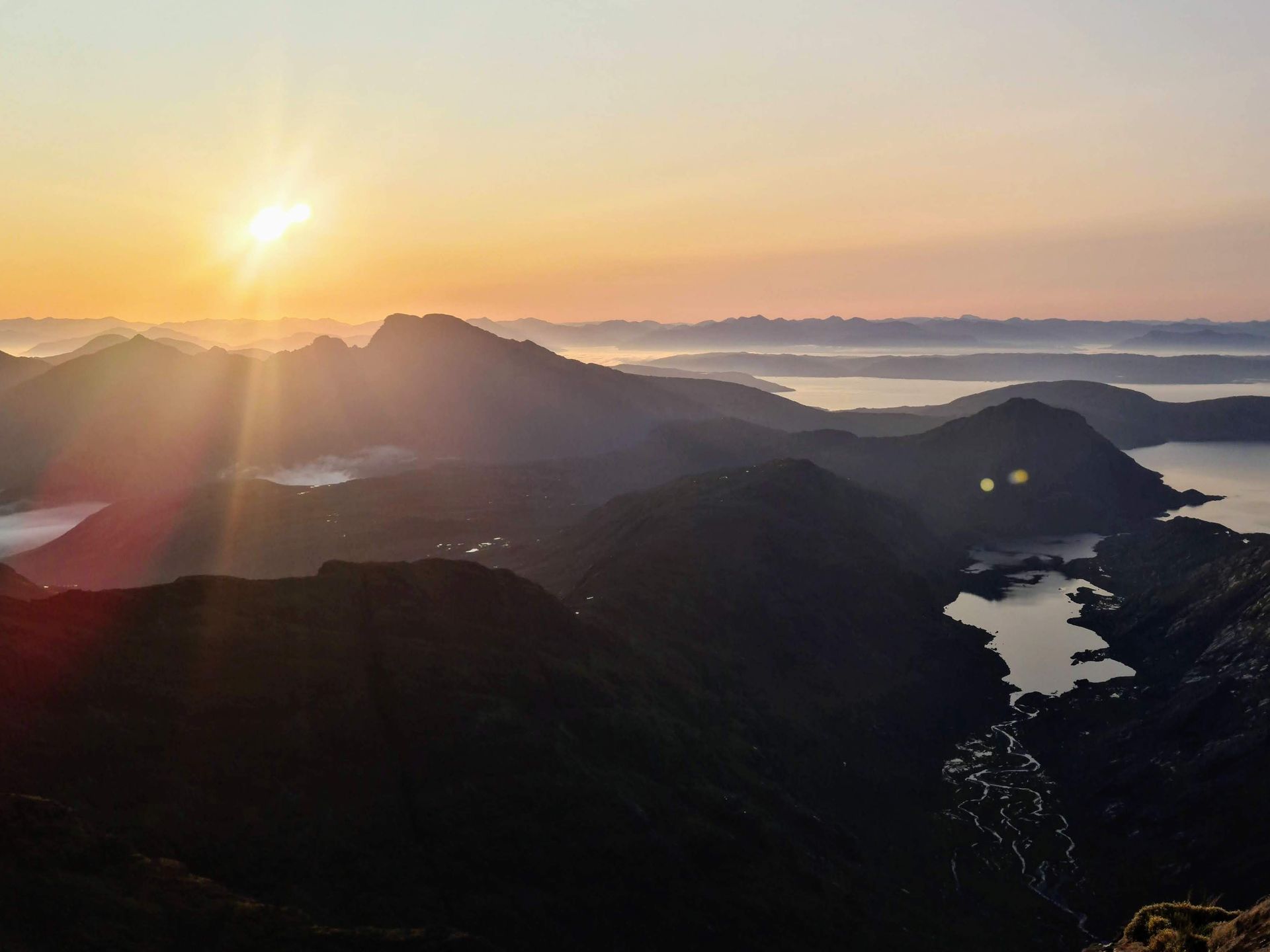Master the Skye Cuillin Ridge Traverse
Essential Fitness Tips for Your Traverse Adventure
Embarking on the exhilarating adventure of a Skye Cuillin Ridge traverse is a dream for many outdoor enthusiasts, offering a unique blend of breath taking views and challenging climbs.
To conquer this iconic Scottish ridge, a thorough mountaineering preparation is essential, combining climbing fitness, strategic tactics, and precise route reading techniques.
Whether you're a seasoned rock climber or an aspiring mountaineer, understanding the intricacies of the Skye Cuillin Ridge will make your journey both safer and more enjoyable. In this guide, we’ll provide you with essential tips to enhance your climbing ability and experience, identify crucial water sources on Skye, and equip you with the confidence of a trusted adventure companion.
Let’s dive into the essentials that will transform your traverse from a daunting challenge into an unforgettable achievement. Learn more about the Skye Cuillin Ridge and its challenges here.
Boosting Climbing Fitness
Boosting your climbing fitness is crucial for tackling the Skye Cuillin Ridge. This section explores the importance of developing stamina, strength, flexibility, and balance to ensure you're physically prepared for the challenges ahead.
Importance of Climbing Fitness
Climbing fitness is essential for successfully navigating the Skye Cuillin Ridge due to the physical demands of the traverse. Climbing requires not just strength but also endurance, flexibility, and balance. A well-rounded fitness regime ensures that you can handle prolonged physical exertion while maintaining stability on the rocky terrain.
The Skye Cuillin Ridge is notorious for its technical challenges. Building muscle endurance allows climbers to tackle long ascents without fatigue. A strong core and leg muscles are vital for maintaining balance on uneven surfaces. Moreover, maintaining a healthy weight can improve agility and reduce strain on your joints.
Consider the local expertise shared in this guide to understand the specific physical demands of the ridge. A comprehensive fitness routine tailored to these needs can significantly enhance your climbing experience.

Building Stamina and Strength for a Skye Cuillin Ridge Traverse
To build the stamina and strength required for the Skye Cuillin Ridge, incorporate a mix of cardiovascular and strength-training exercises into your routine.
- Cardiovascular Training: Engage in activities like running, cycling, or swimming to improve your aerobic capacity. This will help you sustain your energy levels over long periods.
- Strength Training: Focus on exercises that target the core, legs, and upper body. Squats, lunges, and pull-ups are particularly beneficial.
- Interval Training: Incorporate high-intensity interval training (HIIT) to boost endurance and power.
Regularly review and adjust your training plan to match your progress. Consult this source for detailed fitness regimes tailored to mountaineering.
Route Reading Techniques
Route reading is a critical skill for navigating the Skye Cuillin Ridge. This section provides insights into understanding the ridge and effective reconnaissance strategies.
Understanding the Skye Cuillin Ridge traverse
The Skye Cuillin Ridge is renowned for its complexity and beauty. Understanding its topography is essential for any mountaineer planning a traverse. The ridge is characterized by jagged peaks, narrow ridgelines, and numerous climbing challenges.
Familiarize yourself with the terrain by studying maps and guides. Local experts, like those at ukclimbing.com, provide valuable insights into specific sections that require extra attention. Understanding these areas can prevent costly navigation errors.
Consider using a GPS device or app to track your progress and ensure you're on the right path. Understanding the ridge's features can transform your experience from daunting to exhilarating.
Effective Reconnaissance Strategies
Effective reconnaissance involves gathering information about the Skye Cuillin Ridge before your climb. This preparation is crucial for a safe and successful traverse.
- Research: Study online resources and guidebooks such as this PDF for up-to-date route information.
- Local Guides: Hiring a local guide can provide first-hand knowledge and improve your understanding of the ridge's nuances.
- Practice Climbs: Attempt smaller sections of the ridge or similar terrains to familiarize yourself with the conditions.
Reconnaissance is about anticipating challenges and planning accordingly. Utilize these strategies to bolster your readiness and confidence.
Essential Mountaineering Tactics
Mastering mountaineering tactics is vital for traversing the Skye Cuillin Ridge. This section covers planning your adventure and locating water sources on Skye.

Planning Your Traverse Skye Cuillin Ridge Traverse Adventure
Planning a Skye Cuillin Ridge traverse requires careful consideration of logistics, weather, and personal fitness. Creating a comprehensive plan ensures a smoother experience.
- Route Selection: Choose a route that matches your skill level and experience. Consult this guide for detailed route descriptions.
- Weather Monitoring: Regularly check weather forecasts and plan your climb during favorable conditions.
- Packing Essentials: Bring gear suited for varying weather, such as waterproof clothing and high-quality climbing equipment.
A well-thought-out plan minimizes risks and enhances your enjoyment of the adventure.
Water Sources Skye: Staying Hydrated
Staying hydrated on the Skye Cuillin Ridge is critical. Access to water sources is limited, so planning is essential.
- Carry Just Enough Water: Always have a sufficient water supply, especially during warmer months. Traversing the ridge means carrying just enough to not slow you down. Take advantage of any water sources you do pass. dehydration has put an end to many traverse attempts.
- Identify Water Locations: Research reliable water sources along your route. Local guides or this book might offer insights into accessible streams or springs.
By understanding and preparing for water availability, you can maintain hydration and energy levels throughout your climb.





